Mark Amery – 3 October, 2012
Bellamy's videos are of very varied lengths but all are loops. They pay careful dramatic attention to the rhythm this involves. Time itself offers the work's structure. The shortest, Meme is only 24 seconds and is akin to a kinetic photograph. The rhythm of a loop of tape going round and round is replicated in the mirrored motion of cars going in and out of a McDonalds drive-in as endless loop.
Wellington
Max Bellamy
Borrowed Time
Lucy Hughes
Five Snapshot Backs and One Snapshot Front 1963-1969…
6 September - 29 September 2012
I’m rather taken by the video work of Max Bellamy. The five works here are very diverse (created whilst William Hodges Fellow 2011 in Southland), yet all fruitfully explore the camera’s tensile relationship with the world. They share a meditative musicality, visually and aurally, and a close attention to the tactile sensations moving image can generate: the brush of air currents against objects, a visual material’s rhythmic tidal flow.
Soundscapes are integral to their completion - part rumbling electroacoustic environments, part elegant instrumental suites. The exhibition title Borrowed Time may make a nod to our ecological peril - something that quietly hangs out as a background of these works - but it also indicates an interest, like modernist painting in creating a space of time outside of day-to-day activity for reflection.
The works are of very varied lengths but all are loops. They pay careful dramatic attention to the rhythm this involves. Time itself offers the work’s structure. The shortest, Meme is only 24 seconds and is akin to a kinetic photograph. The rhythm of a loop of tape going round and round is replicated in the mirrored motion of cars going in and out of a McDonalds drive-in as endless loop. Shot at night, the Golden Arches and a New Zealand flag are ghosted and doubled in the sky above. The McDonalds resembles a giveaway free plastic toy itself, a tiny self-contained slot car set, where the wheels of commerce simply go round and round. Very smart indeed.
Positioned next to it at nine and a half minutes is one of the longest works. It’s as close to a narrative short film as video art in this country gets. Maroon; Blue presents a Robinson Crusoe scenario of a man stranded on a small island. Exquisitely shot, taking every conceivable perspective on the island and individual as subjects (moving through the bush behind our Crusoe; looking back at the island and his fire from out at sea at night; and, most audaciously from directly above, as if the island were a splodge on a canvas) Bellamy brilliantly plays out the drama of the man’s position as an endless loop of day-night-day. He lights a fire, stares at the horizon, picks up sticks and sleeps, his mood ranging from quiet elation to despair. For one magic realist moment after a fish washes ashore, the sea is alive with the silver light of jumping fish - a daring digital intrusion. The camera then moves to a wet fish-like rock on the shore, as if challenging us to see it too jump. Everything in this film is elementally alive.
By contrast again, Avail is a twelve and half minute moving image of hot and cold streams of what resembles paint swirling and meeting - marbling. It is in fact a close up of a bubble. You’d expect it to be lava lamp trite, yet it’s a very beautiful, evocative meeting of volatile different states. Here as elsewhere Bellamy shows an interest in how natural forces move against each other.
In Carte Blanche a model passenger aircraft is filmed flying through native bush, light and landscape reflected in its windows and surfaces. Together with its soundtrack the work explores the sense of turbulence rippling off the surface of the aircraft - an abstract static electrical charge. The appearance of a toy aircraft in dense New Zealand native bush - as if it were a kereru charging through - reflects a local perspective. That however doesn’t feel like the work’s greatest thrust - the way the toy seems close to breaking point - a beautiful metaphor for the way we’re hurtling, carte blanche, toward environmental Armageddon.
I’m less taken with Bellamy’s photographs, which also feature in this quarter’s Art New Zealand. They are strong enough, finding interesting juxtapositions in the landscape. Like his film they are shot with a very good eye for their music. Yet they travel across well-trodden ground. The moving image work in contrast feels remarkably fresh.
Next door Lucy Hughes explores the materiality of the photograph as a fabric - a physical object embodying memory in its weave.
Using found photography from the 1960s the first set Five Snapshot Backs and One Snapshot Front 1963-1969, are more interesting as an idea than actual works. The artist statement is little overworked - about the obvious tension here between the physical artifact of the photograph as holder of time and memory and our digital age.
The Five Snapshot Backs are enlarged reproductions of the worn backs of photographs. They carry worn marks that appear like rubbings - facial apparitions appearing out of tea leaves. I don’t find these visually arresting, just smart.
More interesting is the one snapshot seen from the front. Here an image of a child is presented upside down, the surface full of places where it is worn through to tufts of fabric, and another spot where a square of light has added a new abstract window to the work. Something tangible is being disrupted, like an old snapshot from a shoebox psychically trampled and exposed.
Another suite of works, Five Originals (Exploded) Five Parts, engaged me more (previously shown at Oedipus Rex in Auckland in June. Here cropped details from images have been enlarged. The surfaces however are pitted rows, pixel-like. Some of these pits have been painted, as if presenting a Braille-like code or rosary beads - tactile messages from the past.
My favourite is Quartz Pink which, in delicate pink is particularly painterly. The image is charged by its figuration, which appears to be the close-up of the midriff of the body of a female. It is tantalizingly close to identification (is it a bride at a wedding?), but whilst beautiful, graceful resists sexualisation or commodification. It most successfully embodies the flash of an impression of memory that is drawn from a glance of movement in the corner of your eye.
Other works play with the empty meditative spaces to be found in the background fields of old snapshots as a kind of encoded fabric. In Lavender Mauve a corner of a field and barbed wire farm fence give ways to a drop to an endless ocean the eye gets lost in. In Pistachio Green we’re lost in the colour and texture in the washing. Nothing new here really, a safe abstraction, yet delicately adding paint Hughes rather successfully brings together a colourist based abstract expressiveness to photography - at a time when we’re losing touch with photography’s physical presence as an artifact.
30 Upstairs is a project space in Courtenay Place set up in May this year by collector Malcolm Brow. It provides space for some handpicked art school graduates and other developing talent to show and sell their work and Brow is also providing pop-up space for dealers and auction houses (the Les and Milly Paris Collection was brought here by Art + Object recently). He is looking beyond Wellington to give space to artists we don’t get to see here (for example, he’s got Sam Thomas of Snake Pit in Auckland looking out for work for him).
In Hughes and Bellamy, 30 Upstairs presents two significant talents, beautifully paired, pushing video and photography in interesting directions. Both work hard with their material.
Mark Amery
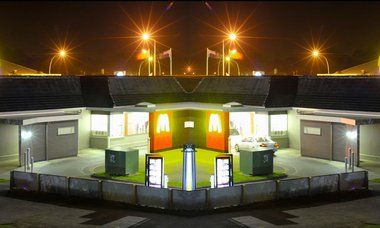
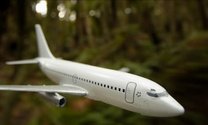
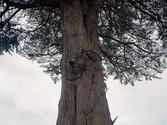
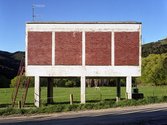
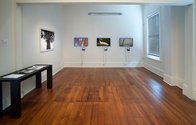
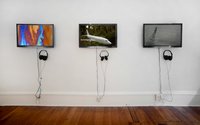






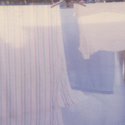

 Two Rooms presents a program of residencies and projects
Two Rooms presents a program of residencies and projects Advertising in this column
Advertising in this column
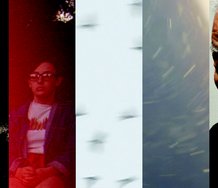
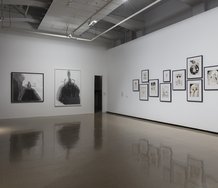
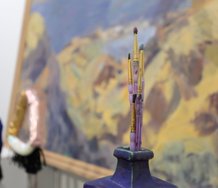
This Discussion has 0 comments.
Comment
Participate
Register to Participate.
Sign in
Sign in to an existing account.